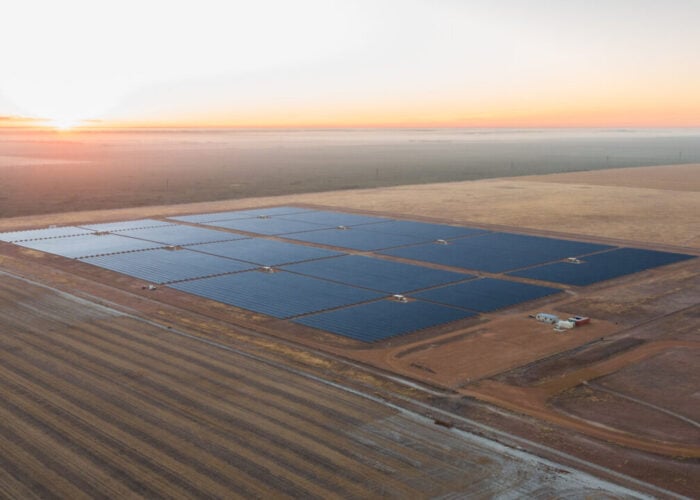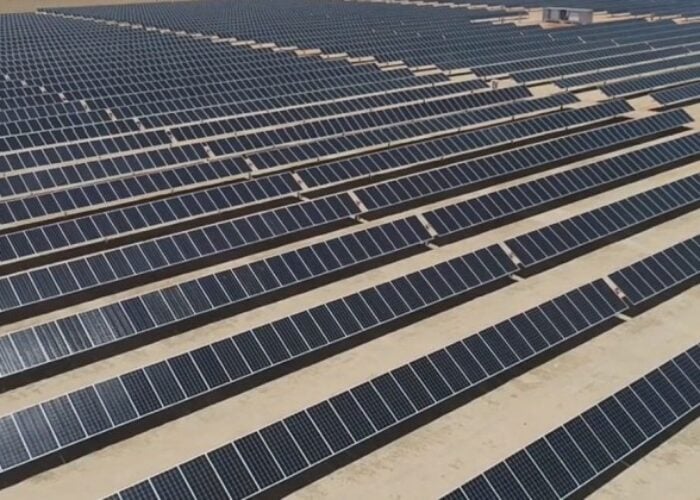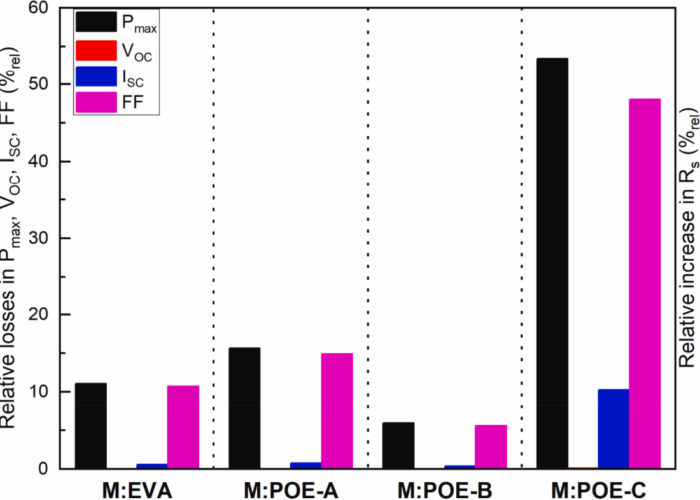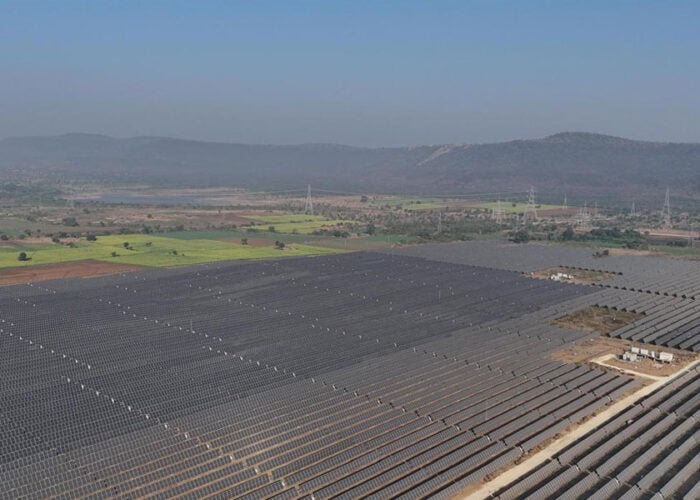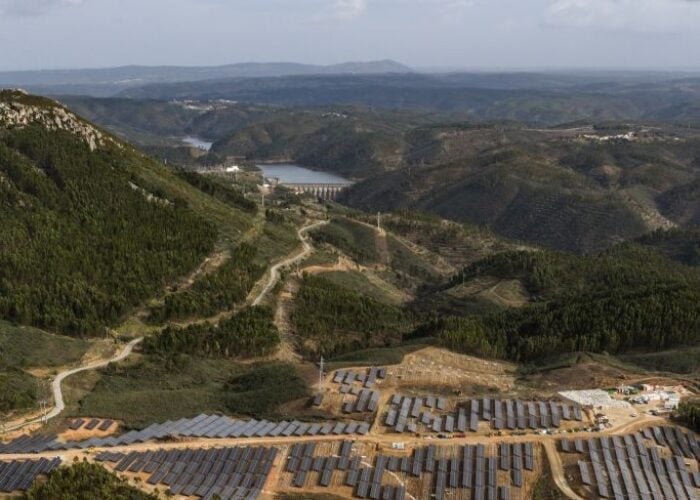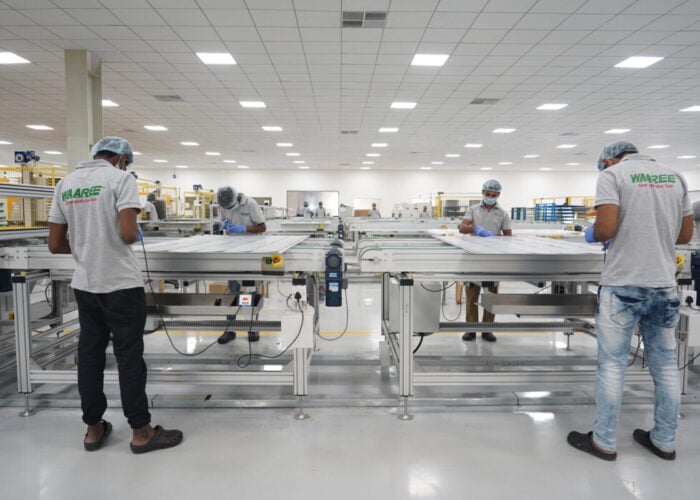SolarEdge is hoping that new processing technology in its latest range of inverters will “revolutionise” inverter design in the same way that flat screen technology superseded old-fashioned cathode ray TVs.
The publicly traded Israeli company claims that the topology of its new solar inverters reduces the need for magnetics and cooling components in the device hardware, by incorporating 'HD Wave' digital processing technology developed by SolarEdge.
Try Premium for just $1
- Full premium access for the first month at only $1
- Converts to an annual rate after 30 days unless cancelled
- Cancel anytime during the trial period
Premium Benefits
- Expert industry analysis and interviews
- Digital access to PV Tech Power journal
- Exclusive event discounts
Or get the full Premium subscription right away
Or continue reading this article for free
The company claims that the HD Wave inverters will bring solar systems up to “99% efficiency”, increasing reliability at the same time.
According to a short promotional film made by SolarEdge to explain the innovations behind the product design, magnetics and cooling components contribute to making typical inverters “big and bulky”, which is “just like the heavy television sets of 15 years ago that used a glass tube” and that have subsequently been replaced by the rapid development of flat screen technologies.
“Inverters also need this type of revolution,” the corporate video says, before introducing the HD Wave digital processing technology that it says makes “solar energy more viable than ever”. As an example, it presents a comparison between SolarEdge’s existing range and the new one. A device that would have previously weighed around 22kg can be pared down to weigh just 9.5kg.
SolarEdge CEO and chairman Guy Sella said that for solar to really become competitive with fossil fuels, technological progress must continue.
“…inverters are the key component for accelerating the adoption of solar technology. We believe that our new HD-Wave technology is a significant milestone in the development of solar and further positions SolarEdge as a leader in a thriving industry,” he added.
Sella will make a presentation on 15 September on the new inverters at next week's Solar Power International trade show in Anaheim, California.
Analyst’s view
Cormac Gilligan, senior PV analyst with IHS, told PV Tech this morning that SolarEdge’s new inverters are likely to save installers time and labour costs as their decreased size and weight means one person could comfortably handle a device to install it. The increased efficiency, at 99%, would also “allow for a higher energy yield and faster ROI (return on investment)”, Gilligan said.
On the company itself, Gilligan said that its traditional focus of combining PV inverters and power optimisers is a “unique” offering. SolarEdge has “been very successful in increasing it shipments of inverters and power optimisers in a very competitive market,” he said.
“Its new product will continue to allow it to differentiate itself from the competition by offering smaller, lower weight and more efficient inverters to the market which will allow PV system owners to make significant savings.
“Importantly, the new inverter will allow it to offer a competitive solution to solar lease suppliers in the United States where the competition is very intense presently,” Gilligan added.
The reduction in size and weight means that SolarEdge could even have beaten Google to the punch, according to Gilligan, who blogged for PV Tech in 2014 on the internet giant’s ‘Little Box’ challenge offering a cash prize to anyone who could scale down an inverter’s design to one-tenth of its present size.
“Even major technology companies such as Google were seeking to develop inverters with a lot of these characteristics”.
In a wider context, Gilligan said that PV inverters are becoming “a more commoditised product” with prices forecast to decline as much as 11% a year on average to reach US$0.08 per watt by 2019.
Various inverter manufacturers are bringing innovations to the table at present, not just in their core inverter hardware businesses, but also in related energy management systems. German maker SMA Solar Technology recently announced a tie-in with Bosch subsidiary BSH Hausgeräte, which makes home appliances. SMA’s Smart Home management system, Sunny Home Manager, will be capable of managing the operation and scheduling of energy intensive domestic tasks such as laundry and running dishwashers. The system should therefore make it easier for PV system owners to optimally schedule the use of surplus electricity from their solar installation, based on system yield forecasting and the typical consumption patterns of the household.
Below is SolarEdge's short promotional movie on HD Wave technology and its new inverters.

